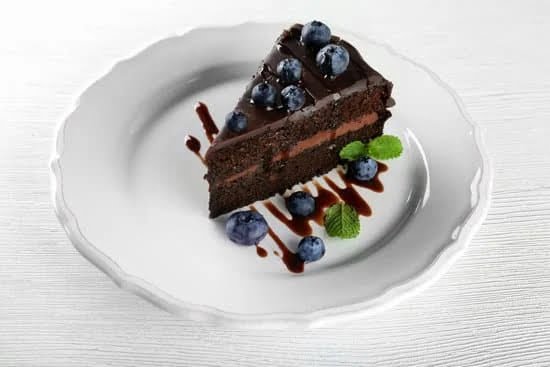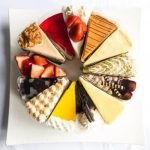Are you interested in learning how to decorate a cake with a piping bag? Cake decorating is an art that allows you to express your creativity and add a personal touch to any celebration. In this article, we will explore the basic techniques and tips for using a piping bag to create beautiful designs on your cakes.
Whether you’re a beginner or have some experience in cake decorating, mastering the art of using a piping bag can take your skills to the next level. From choosing the right tools to troubleshooting common mistakes, we’ve got you covered. By the end of this article, you’ll have the knowledge and confidence to showcase your masterpiece.
We’ll start by discussing the importance of choosing the right piping bag and tips, followed by mixing the perfect frosting and preparing your cake for decoration. Then, we’ll dive into basic and advanced piping techniques, as well as troubleshooting common mistakes that may occur while using a piping bag. Additionally, we’ll provide tips on how to display and present your beautifully decorated cake. So let’s get started on honing your cake decorating skills.
Getting Started
When it comes to decorating a cake with a piping bag, the first step is to choose the right piping bag and tips for the job. Piping bags come in various materials, including plastic, disposable, and reusable silicone. The size of the piping tip will determine the thickness of the lines or shapes you can create, so it’s important to have a variety of tips on hand for different effects.
One key factor to consider when choosing a piping bag is its durability. Reusable silicone piping bags are not only environmentally friendly but also more durable than their disposable counterparts. They are also easy to clean and can withstand high pressures when squeezing out frosting.
In addition to choosing the right bag, it’s essential to select the correct tips for your design. For example, a round tip is perfect for writing or drawing outlines, while a star tip can create beautiful rosettes or borders. Experimenting with different tips and techniques will help you gain confidence in using a piping bag effectively.
| Choosing the Right Piping Bag | Choosing Piping Tips |
|---|---|
| Consider durability and material | Experiment with different designs |
| Reusable vs disposable options | Size of tip affects line thickness |
The key to mastering the art of cake decoration with a piping bag lies in practice and patience. As you become more comfortable with using different types of bags and tips, you’ll be able to create stunning designs that will impress your friends and family alike.
Learning how to decorate a cake with a piping bag is not just about choosing the right tools but also understanding how they work together to achieve the desired result. By taking the time to get familiar with your piping equipment and practicing various techniques, you’ll be well on your way to becoming an expert cake decorator.
Mixing the Perfect Frosting
When it comes to decorating a cake with a piping bag, the type of frosting you use is crucial. The most common types of frosting used for cake decorating are buttercream, royal icing, and fondant. Buttercream is a versatile and easy-to-use option that can be flavored and colored in endless ways.
Royal icing, on the other hand, dries hard and is perfect for intricate designs that need to hold their shape. Fondant is a smooth and pliable option that creates a flawless finish but may not be as tasty as the other options.
To make the perfect buttercream frosting, you will need unsalted butter, powdered sugar, vanilla extract, and heavy cream. Start by creaming the butter until it’s light and fluffy, then gradually add in the powdered sugar while mixing on low speed. Once combined, add in the vanilla extract and heavy cream until the desired consistency is reached.
For royal icing, you’ll need meringue powder, powdered sugar, and water. Mix the meringue powder with water until foamy, then gradually add in the powdered sugar until stiff peaks form.
Aside from using the right recipe for your frosting, mastering the technique of mixing it to perfection is essential for successful cake decorating with a piping bag. Understanding how to achieve the right consistency for your chosen frosting will ensure that it flows smoothly through your piping bag and holds its shape when applied to your cake.
| Cake Frosting Type | Ingredients |
|---|---|
| Buttercream | Unsalted butter, powdered sugar, vanilla extract, heavy cream |
| Royal Icing | Meringue powder, powdered sugar |
Preparing the Cake
After choosing the right piping bag and tips, and mixing the perfect frosting, the next step in decorating a cake with a piping bag is preparing the cake itself. This involves leveling the layers of the cake and crumb-coating it to create a smooth surface for decorating.
Leveling the cake is an important step to ensure that it will be stable and even when it comes time to decorate. To level a cake, you can use a long serrated knife or a cake leveler to carefully cut off any domed or uneven tops. This will ensure that your cake layers stack neatly on top of one another.
Once the layers are leveled, it’s time to crumb-coat the cake. Crumb-coating involves applying a thin layer of frosting all over the cake to seal in any loose crumbs and create a smooth surface for decorating. To crumb-coat a cake, start by placing a dollop of frosting on top of the leveled layer and using an offset spatula to spread it out evenly over the top and sides of the cake.
When crumb-coating, it’s important to work quickly but carefully to avoid picking up too many crumbs from the cake. Once the entire cake is covered in a thin layer of frosting, let it set in the refrigerator for 20-30 minutes before moving on to piping your decorative designs onto the cake with your piping bag and tips.
Basic Piping Techniques
Decorating a cake with a piping bag is a fun and creative way to add beautiful designs and patterns to any baked creation. With the right tools and techniques, you can turn a simple cake into a work of art. In this section, we will explore the basics of using a piping bag to create lines, dots, and swirls on your cakes.
Choosing the Right Piping Bag and Tips
Before you can begin decorating your cake, it’s important to have the right tools. When it comes to piping bags, there are several options available, including disposable plastic bags and reusable cloth bags. Additionally, you’ll need to select the appropriate piping tips for the design you have in mind. For basic lines and dots, a round tip is often sufficient, while swirls may require a larger star-shaped tip.
Mixing the Perfect Frosting: Recipes and Techniques
The key to successful cake decorating with a piping bag lies in the consistency of your frosting. If the frosting is too thick, it will be difficult to pipe smoothly, while frosting that is too thin will not hold its shape.
There are numerous frosting recipes available, but buttercream is one of the most popular choices for piping due to its smooth texture and versatility. It’s important to follow the recipe carefully and pay attention to the desired consistency for piping.
Basic Piping Techniques: Lines, Dots, and Swirls
Once you have your piping bag filled with your desired frosting and fitted with the appropriate tip, it’s time to practice some basic piping techniques. To create lines, simply apply even pressure on the piping bag while moving in a straight line across the surface of the cake.
For dots, squeeze out small amounts of frosting in quick bursts onto the cake. To make swirls, start at the center of your desired area and use a circular motion as you continue squeezing until you reach your desired size.
By mastering these basic piping techniques with a variety of tips and experimenting with different consistencies of buttercream or other types of frostings using proper tools can help anyone improve their cake decoration skills using these methods.
Advanced Piping Techniques
Once you have mastered the basic piping techniques of lines, dots, and swirls, you can move on to more advanced designs such as roses, flowers, and leaves. Using a piping bag to create intricate floral designs can take your cake decorating skills to the next level. With the right tools and practice, you can create beautiful and professional-looking floral decorations that will wow your friends and family.
To begin creating advanced piping designs, it is important to have the right equipment. Make sure to choose a piping bag that is comfortable to hold and easy to maneuver. Additionally, you will need various tips for creating different shapes and textures. For example, a petal tip is ideal for creating realistic flower petals, while a leaf tip can be used for adding delicate foliage to your design.
One key technique for creating stunning floral decorations is the ability to control pressure when using a piping bag. Different amounts of pressure will yield varying results, so it’s important to practice applying gentle and steady pressure while piping.
With practice, you will be able to create lifelike roses with layers of delicate petals, as well as intricate flowers with detailed petal patterns. Additionally, learning how to pipe leaves will add a finishing touch to your floral arrangements, bringing them to life with added depth and dimension.
Furthermore, here are some useful tips on how you can decorate a cake with a piping bag:
- Start by practicing on parchment paper or a plate before moving on to decorating your cake.
- Use an appropriate consistency of frosting – too stiff or too runny icing can make it difficult to achieve the desired result.
- Experiment with different colors of frosting and combinations of tips for unique designs.
With dedication and patience in perfecting these advanced piping techniques, decorating cakes with intricate floral designs can become one of your favorite hobbies.
Troubleshooting
When it comes to decorating a cake with a piping bag, there are common mistakes that can occur, but they can easily be fixed with the right techniques. Whether you are a beginner or experienced baker, it’s essential to know how to troubleshoot these issues to ensure that your cake turns out as beautifully decorated as you imagined.
Uneven or Inconsistent Pressure
One common mistake when using a piping bag is applying uneven or inconsistent pressure, resulting in frosting that comes out lumpy or uneven. To fix this issue, practice maintaining steady and consistent pressure while piping. Start by practicing on a flat surface before moving on to decorating the cake. Additionally, make sure that the frosting is at the right consistency – not too stiff or too runny.
Frosting Bulging or Oozing Out
Another common problem when using a piping bag is frosting bulging or oozing out from between layers of the cake. This can be due to overfilling the piping bag or not properly securing the tip onto the bag. To fix this issue, avoid overfilling the bag with frosting and only fill it two-thirds full at most. Additionally, make sure that you securely fasten the tip onto the bag to prevent any leakage.
Clogged Tips
Clogging of the piping tip can also be a common issue when decorating a cake with a piping bag. This can happen if there are air bubbles in the frosting or if there are particles such as crumbs that get stuck in the tip.
To fix this issue, gently twist and squeeze the piping bag to release any air bubbles before starting to decorate. Additionally, always make sure that you have strained and smoothed out your frosting beforehand to avoid any clogging issues.
By being aware of these common mistakes and knowing how to fix them, you can confidently decorate a cake with a piping bag and create stunning designs without any hiccups along the way. With practice and patience, you will hone your skills and become an expert at using a piping bag for cake decorating.
Showcasing Your Masterpiece
Once you have successfully decorated your cake using a piping bag, the next step is to showcase your masterpiece with style. Presentation plays a significant role in the overall appeal of your cake, so it’s important to pay attention to this aspect. Here are some tips on how to display and present your decorated cake:
- Choose the right cake stand or platter: The foundation of your cake display is crucial. Select a cake stand or platter that complements the design and theme of your cake. Consider the size and shape of the cake when choosing the appropriate stand.
- Accessorize with fresh flowers or fruits: Adding a touch of fresh flowers or edible fruits can elevate the visual appeal of your cake. Place them strategically around the base of the cake or on top for a stunning effect.
- Utilize decorative accents: Ribbons, edible glitter, or themed decorations can be used to enhance the overall presentation of your cake. Be mindful not to overwhelm the design and keep it balanced.
It’s essential to ensure that all aspects of your presentation complement the design and effort you put into decorating with a piping bag. Taking the time to thoughtfully present your cake will enhance its overall impact.
Remember, showcasing your decorated cake is as much an art form as decorating it with a piping bag. The way you choose to display and present your masterpiece can truly take it from good to outstanding. With these tips in mind, you can effectively showcase your skills and impress everyone with your beautifully decorated creation.
Conclusion
In conclusion, mastering the art of cake decorating with a piping bag takes practice, patience, and a willingness to learn from mistakes. As you continue to hone your skills, remember that choosing the right tools and ingredients is key to creating beautiful designs on your cakes. From selecting the perfect piping bag and tips to mixing the ideal frosting, each step in the process plays a crucial role in achieving professional-looking results.
As you progress in your cake decorating journey, don’t be afraid to experiment with different techniques and designs. Whether you’re perfecting basic piping skills such as creating lines, dots, or swirls, or advancing to more intricate floral patterns like roses and leaves, every new challenge will help you grow as a decorator. Take advantage of online tutorials and classes to expand your knowledge and stay updated on the latest trends in cake decorating.
Finally, showcasing your masterpiece is just as important as creating it. Pay attention to details such as display and presentation tips to truly elevate the overall look of your finished product. With dedication and continued practice, you’ll soon find yourself confidently creating stunning cakes that are sure to impress any audience. The journey of learning how to decorate a cake with a piping bag may have its ups and downs, but the end result will always be worth it.

Welcome to our cake decorating blog! My name is Destiny Flores, and I am the proud owner of a cake decorating business named Cake Karma. Our mission is to provide delicious, beautiful cakes for all occasions. We specialize in creating custom cakes that are tailored specifically to each customer’s individual needs and tastes.





